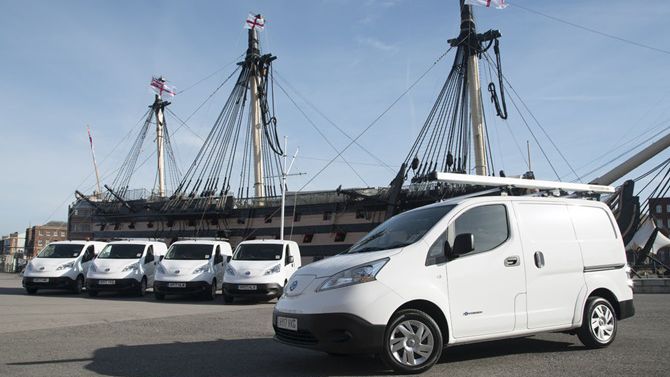Royal Navy Deploys Bikes, Electric Vans at Portsmouth

White, grey and red vehicles will help sailors and civilians improve Portsmouth Naval Base's green credentials thanks to not one but two new transport and health initiatives.
Fleets of electric vans and 'Boris bikes' are being introduced base-wide to cut down on congestion, pollution and costs – and, in the case of the cycles, foster healthier lifestyles.
The NAVYfit Loan Bike Scheme mirrors the initiative made famous in London by then mayor Boris Johnson - hiring a bike at one location in the city, returning it at your destination.
Partly funded by BAE and the Royal Navy and Royal Marines Charity (RNRMC) as well as the RN Sports Lottery, the initiative allows sailors/civilians to pop a coin in a slot at one of the special bike shelters, clamber on to the distinctive grey and red bicycles, and stow it at a shelter near their destination, or return it to the original shed.
The base covers more than half a square mile with a regular bus service running around much of it.
But if you miss it, or you're living in Nelson and need to get to North West Wall, that's a mile's walk – providing the caissons are in.
There are 15 bikes and three 'docking stations' so far: Victory Building (Naval Base Headquarters), Lion Gate and in at HMS Nelson Personnel Centre.
The plan is to expand the scheme to 30 bikes in the summer, with additional docking stations at Trafalgar gate and close to the Princess Royal Jetty for the new carriers.
The bikes are 'step through' with enclosed chain cases, dynamo lights and hub gears and tracking devices.
As for the electric vehicles, 48 Nissan e-NV200 Combis have been acquired for the next two years, with 26 charging points and 28 designated parking bays across the site. They can cover 106 miles on a full charge - and it takes just three hours to completely re-charge the batteries.
BAE says the electric vehicles will save the MOD around £360,000 ($450,000) in fuel and other costs over its two-year duration, beyond the pollution/congestion benefits.
This article appears courtesy of Royal Navy News and may be found in its original form here.
